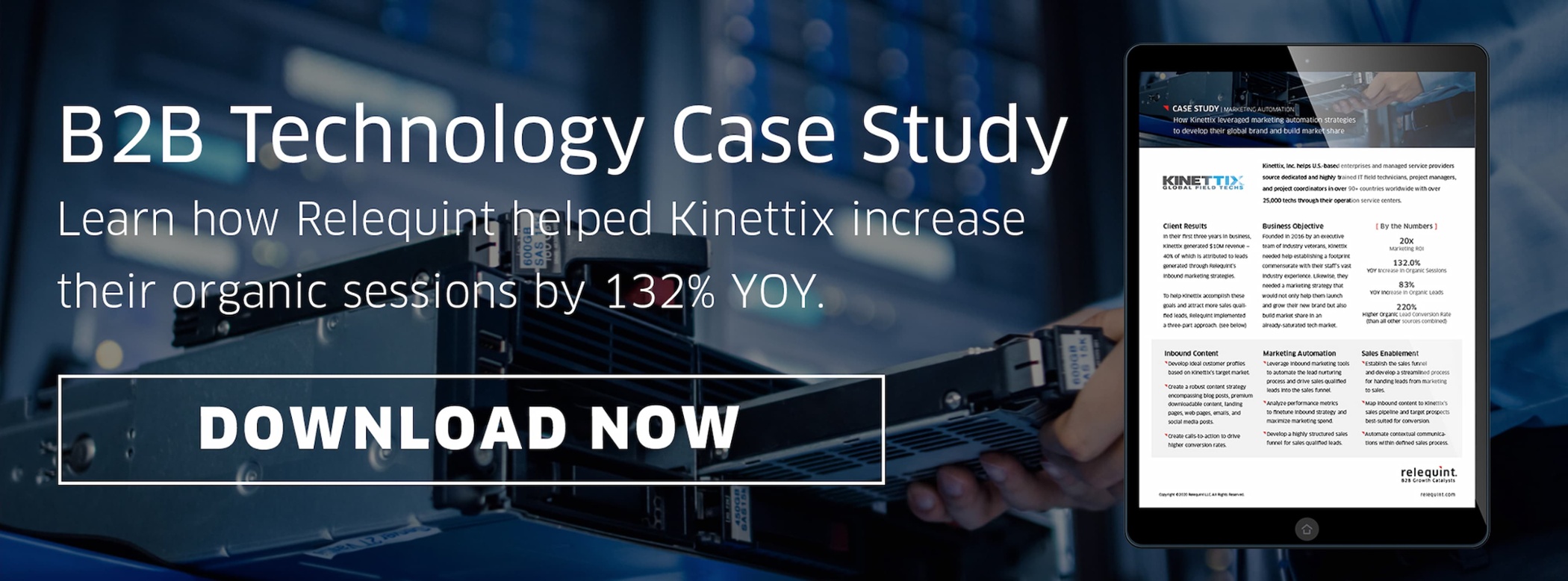 Content marketing offers B2B companies incredible opportunities to engage with prospective buyers and demonstrate why they are the leading brand. Countless brands today compete for the attention of consumers. For a business to rise above the rest, it must understand how to craft content that genuinely engages and interests the consumer to encourage them to make a purchase.
Content marketing offers B2B companies incredible opportunities to engage with prospective buyers and demonstrate why they are the leading brand. Countless brands today compete for the attention of consumers. For a business to rise above the rest, it must understand how to craft content that genuinely engages and interests the consumer to encourage them to make a purchase.
One estimate found that up to 70% of the content that businesses took the time, effort, and resources to create goes unused. In other words, countless companies struggle to create content that will produce the marketing ROI they want to see.
Knowing how to create inbound marketing materials that nurture customers at every stage of the sales funnel can help make your B2B technology company’s sales cycle significantly smoother.
Content Marketing & the Buyer’s Journey
When people think about blogs, they often focus on the top-of-funnel content. In other words, they over-produce content centered around introducing people to the company and its products or services.
However, your content strategy should serve the entire buyer’s journey. You don’t just want to focus on prospects who are still putting a name to their problem. Instead, you should have an equal amount of content for the Awareness, Consideration, and Decision-Making stages.
While creating content for the different parts of the buyer’s journey, remember what makes B2B marketing and sales unique. For example, customers purchasing from B2B technology companies often have to get permission and input from several stakeholders within their company. Creating content tailored to all of these different buyers can benefit your overall marketing strategy.
As customers engage with the content, also encourage them to click on other content with a strong call-to-action.
Types of Inbound Content
Throughout this buyer’s journey, you will need to work with a variety of different types of content. Try to work as many of these into your regular rotation as possible. Not only do the different formats help to spark interest, but it also helps you capture the attention of prospects who might have a strong preference for certain systems of content over others — such as video over text.
1. Blog Content
These are the basic foundation of your content marketing strategy. The posts can cover topics across the buyer’s journey, making them extremely versatile.
2. Articles
In addition to blogs on your own website, you can also produce articles to guest post on other sites. Getting published on an industry-leading website, for example, can greatly boost visibility and encourage new leads. These posts generally will focus on broader informational text, as is found at the top of the funnel.
3. Whitepapers
Whitepapers provide an excellent opportunity for businesses to cover topics more deeply than they can in a blog post. When they are used as gated content, they also encourage sign-ups and email address collection. White papers often serve well from the middle to the bottom of the sales journey, as they can communicate information relevant to those comparing companies and preparing to make a purchase.
4. Ebooks
Ebooks make an excellent means of exploring higher-level topics than white papers, but at a similar level of detail. These publications tend to have a more conversational approach.
5. Case Studies
Case studies offer prospects a close look at your business and the success you have driven for others, making them excellent for the bottom of the funnel as customers prepare to make their decision.
Crafting Your Inbound Content
Crafting your inbound content at all stages of the buyer’s journey requires careful consideration to ensure that the targeted prospects appreciate the material.
- Keyword research. Begin by thoroughly investigating what drives customers. Look for topics of consideration and keywords related not only to the top-of-the-funnel but also to the middle and bottom.
- Development. Create high-value content that builds trust in you and your organization.
- Promotion makes sure that the content can be easily found by the intended audience. Means of promotion will include SEO, social media postings, and email. Also, make sure that related content has a strong call to action that points the intended audience towards relevant content further down the funnel.
- Know when to bring in human contact. As customers get closer to the bottom of the funnel, the sales team will need to leverage your inbound content. Make sure that the sales representative can easily see which content the prospect engages with to make each conversation significantly more relevant.
Producing high-quality, SEO-driven inbound content helps B2B technology companies reach more customers and increase lead generation. Accomplishing these goals requires an intimate knowledge of the sales funnel and the types of content that brands can produce for each stage.![]()







 By
By 
